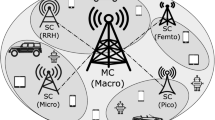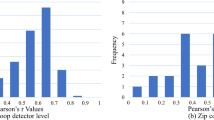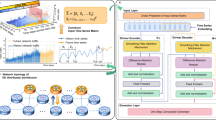Abstract
Telecommunication using 5G plays a vital role in our daily lives and the global economy. However, the energy consumption and carbon emissions of 5G mobile networks are concerning. Here we develop a large-scale data-driven framework to quantitatively assess the carbon emissions of 5G mobile networks in China, where over 60% of the global 5G base stations are implemented. We reveal a carbon efficiency trap of 5G mobile networks leading to additional carbon emissions of 23.82 ± 1.07 Mt in China, caused by the spatiotemporal misalignment between cellular traffic and energy consumption in mobile networks. To address this problem, we propose an energy-saving method, called DeepEnergy, leveraging collaborative deep reinforcement learning and graph neural networks, to make it possible to effectively coordinate the working state of 5G cells, which could help over 71% of Chinese provinces avoid carbon efficiency traps. The application of DeepEnergy can potentially reduce carbon emissions by 20.90 ± 0.98 Mt at the national level in 2023. Furthermore, the mobile network in China could accomplish more than 50% of its net-zero goal by integrating DeepEnergy with solar energy systems. Our study deepens the insights into carbon emission mitigation in 5G networks, paving the way towards sustainable and energy-efficient telecommunication infrastructures.
This is a preview of subscription content, access via your institution
Access options
Access Nature and 54 other Nature Portfolio journals
Get Nature+, our best-value online-access subscription
$29.99 / 30 days
cancel any time
Subscribe to this journal
Receive 12 digital issues and online access to articles
$119.00 per year
only $9.92 per issue
Buy this article
- Purchase on Springer Link
- Instant access to full article PDF
Prices may be subject to local taxes which are calculated during checkout




Similar content being viewed by others
Data availability
The numbers of base stations and mobile users in each province are listed in Supplementary Tables 3 and 4. The network traffic data and the number of mobile users in Nanchang are listed in Supplementary Table 2. Source data are provided with this paper.
Code availability
The code used in this study can be downloaded from https://github.com/Tong89/Sustainability_5G.
References
Manyika, J. & Roxburgh, C. The Great Transformer: The Impact of the Internet on Economic Growth and Prosperity (McKinsey Global Institute, 2011).
Dang, S., Amin, O., Shihada, B. & Alouini, M.-S. What should 6G be? Nat. Electron. 3, 20–29 (2020).
Mwangama, J., Malila, B., Douglas, T. & Rangaka, M. What can 5G do for healthcare in Africa? Nat. Electron. 3, 7–9 (2020).
Gohar, A. & Nencioni, G. The role of 5G technologies in a smart city: the case for intelligent transportation system. Sustainability 13, 5188 (2021).
Dai, C., Liu, X., Lai, J., Li, P. & Chao, H.-C. Human behavior deep recognition architecture for smart city applications in the 5G environment. IEEE Netw. 33, 206–211 (2019).
Taleb, T., Afolabi, I. & Bagaa, M. Orchestrating 5G network slices to support industrial internet and to shape next-generation smart factories. IEEE Netw. 33, 146–154 (2019).
Al-Bawri, S. S., Islam, M. T., Islam, M. S., Singh, M. J. & Alsaif, H. Massive metamaterial system-loaded MIMO antenna array for 5G base stations. Sci. Rep. 12, 14311 (2022).
Hecht, J. et al. The bandwidth bottleneck. Nature 536, 139–142 (2016).
I, C.-L., Han, S. & Bian, S. Energy-efficient 5G for a greener future. Nat. Electron. 3, 182–184 (2020).
Ding, Y. et al. Carbon emissions and mitigation potentials of 5G base station in China. Resour. Conserv. Recycl. 182, 106339 (2022).
Tomás, J. P. China Ends August with 2.1 Million 5G Base Stations: Report (RCR Wireless News, 2022); https://www.rcrwireless.com/20220923/5G/china-ends-august-2-million-5G-base-stations-report
Griggs, D. et al. Sustainable development goals for people and planet. Nature 495, 305–307 (2013).
Guo, J., Wang, L., Zhou, W. & Wei, C. Powering green digitalization: evidence from 5G network infrastructure in China. Resour. Conserv. Recycl. 182, 106286 (2022).
Ilieva, R. T. & McPhearson, T. Social-media data for urban sustainability. Nat. Sustain. 1, 553–565 (2018).
Yang, C., Li, J., Ni, Q., Anpalagan, A. & Guizani, M. Interference-aware energy efficiency maximization in 5G ultra-dense networks. IEEE Trans. Commun. 65, 728–739 (2016).
Birdsey, R. A. Carbon Storage and Accumulation in United States Forest Ecosystems Vol. 59 (US Department of Agriculture, Forest Service, 1992).
Peng, C., Lee, S.-B., Lu, S., Luo, H. & Li, H. Traffic-driven power saving in operational 3G cellular networks. In Proc. 17th Annual International Conference on Mobile Computing and Networking (eds Ramanathan, P., Nandagopal, T. & Levine, B.) 121–132 (Association for Computing Machinery, 2011).
Rostami, S., Heiska, K., Puchko, O., Leppanen, K. & Valkama, M. Pre-grant signaling for energy-efficient 5G and beyond mobile devices: method and analysis. IEEE Trans. Green Commun. Netw. 3, 418–432 (2019).
Wu, J., Zhang, Y., Zukerman, M. & Yung, E. K.-N. Energy-efficient base-stations sleep-mode techniques in green cellular networks: a survey. IEEE Commun. Surv. Tutor. 17, 803–826 (2015).
Yu, G., Chen, Q. & Yin, R. Dual-threshold sleep mode control scheme for small cells. IET Commun. 8, 2008–2016 (2014).
Chamola, V. & Sikdar, B. Solar powered cellular base stations: current scenario, issues and proposed solutions. IEEE Commun. Mag. 54, 108–114 (2016).
Freeman, J. M. et al. System Advisor Model (SAM) General Description (National Renewable Energy Lab, 2018).
Waldman, J., Sharma, S., Afshari, S. & Fekete, B. Solar-power replacement as a solution for hydropower foregone in US dam removals. Nat. Sustain. 2, 872–878 (2019).
Peng, W. et al. Managing China’s coal power plants to address multiple environmental objectives. Nat. Sustain. 1, 693–701 (2018).
Wang, J. et al. Exploring the trade-offs between electric heating policy and carbon mitigation in China. Nat. Commun. 11, 6054 (2020).
Bogdanov, D. et al. Radical transformation pathway towards sustainable electricity via evolutionary steps. Nat. Commun. 10, 1077 (2019).
Statistics in Communication Industry (People’s Republic of China’s Ministry of Industry and Information Technology, 2022); https://www.miit.gov.cn/gxsj/tjfx/txy/index.html
Arnold, O., Richter, F., Fettweis, G. & Blume, O. Power consumption modeling of different base station types in heterogeneous cellular networks. In 2010 Future Network & Mobile Summit (ed. Saracco, R.) 1–8 (IEEE, 2010).
I, C.-L. et al. Toward green and soft: a 5G perspective. IEEE Commun. Mag. 52, 66–73 (2014).
Crawley, D. B. et al. Energyplus: creating a new-generation building energy simulation program. Energy Build. 33, 319–331 (2001).
Notice of the Office of the People’s Government of Nanchang City on Forwarding the 2021 Plan of the Municipal Development and Reform Commission and State Grid Nanchang Power Supply Company for Orderly Power Consumption of Nanchang Power Grid (Nanchang Municipal People’s Government, 2021); http://www.nc.gov.cn/nc_xxgk/jsp/zfgb/ncgb_content.jsp?mid=a731211fe1094abfaea8ab348bd5ba8b
China Electricity Council Annual Development Report of China’s Power Industry (2021) 1st edn (China Building Materials Press, 2021).
Liu, Z. et al. Reduced carbon emission estimates from fossil fuel combustion and cement production in China. Nature 524, 335–338 (2015).
Yang, Y. et al. Mean field multi-agent reinforcement learning. In International Conference on Machine Learning (eds Dy, J. G. & Krause, A.) 5571–5580 (PMLR, 2018).
Yan, J., Yang, Y., Elia Campana, P. & He, J. City-level analysis of subsidy-free solar photovoltaic electricity price, profits and grid parity in China. Nat. Energy 4, 709–717 (2019).
Kaabeche, A., Belhamel, M. & Ibtiouen, R. Techno-economic valuation and optimization of integrated photovoltaic/wind energy conversion system. Sol. Energy 85, 2407–2420 (2011).
Acknowledgements
This research has been supported in part by the National Key Research and Development Program of China under grant no. 2020YFA0711403 to D.J., by the National Natural Science Foundation of China under grant no. U21B2036 to T.J., by the National Natural Science Foundation of China under grant no. 61971267 to Y.L., and the International Postdoctoral Exchange Fellowship Program (Talent Introduction Program) under Project YJ20210274 to T.L. The individuals or organizations who provided funding had no role in study design, data collection, analysis, publication decision or preparation of the paper. We also thank the China Mobile Research Institute for Jiutian platform support and the China Mobile Group Jiangxi Company for data support.
Author information
Authors and Affiliations
Contributions
T.L., D.J., Y.L. and T.J. conceived and designed the study. L.Y. and Y.Z. collected and provided the data. T.L., Y.M., T.D. and W.H. carried out the simulations and analyses. All authors contributed to the discussions on the methods and the writing of this article.
Corresponding authors
Ethics declarations
Competing interests
The authors declare no competing interests.
Peer review
Peer review information
Nature Sustainability thanks Dusit Niyato and Jing Meng for their contribution to the peer review of this work.
Additional information
Publisher’s note Springer Nature remains neutral with regard to jurisdictional claims in published maps and institutional affiliations.
Supplementary information
Supplementary Information
Supplementary Notes 0–6, Figs. 1–23 and Tables 1–32.
Source data
Source Data Fig. 1
Source data for Fig. 1.
Source Data Fig. 2
Source data for Fig. 2.
Source Data Fig. 3
Source data for Fig. 3.
Source Data Fig. 4
Source data for Fig. 4.
Rights and permissions
Springer Nature or its licensor (e.g. a society or other partner) holds exclusive rights to this article under a publishing agreement with the author(s) or other rightsholder(s); author self-archiving of the accepted manuscript version of this article is solely governed by the terms of such publishing agreement and applicable law.
About this article
Cite this article
Li, T., Yu, L., Ma, Y. et al. Carbon emissions of 5G mobile networks in China. Nat Sustain 6, 1620–1631 (2023). https://doi.org/10.1038/s41893-023-01206-5
Received:
Accepted:
Published:
Issue Date:
DOI: https://doi.org/10.1038/s41893-023-01206-5
This article is cited by
-
Energy efficient multi-carrier NOMA and power controlled resource allocation for B5G/6G networks
Wireless Networks (2024)
-
A framework for enterprise assessment of carbon performance using support vector machines
Soft Computing (2024)
-
Role of green financial assets, financial technology and the green energy on the development of a green economy
Environmental Science and Pollution Research (2023)



